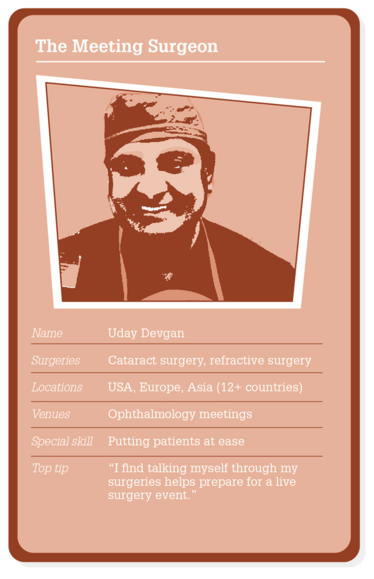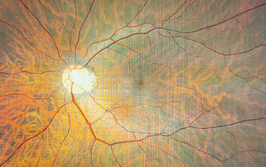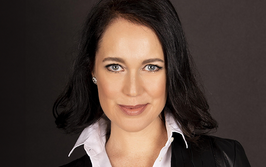No Regrets
Live surgery is tougher than it looks – but it is a very worthwhile experience
Live surgery is a lot more challenging than people think. My first live surgery was back in 2003, and I was nervous – the pressure was on! So I prepared in my own private operating room in Los Angeles, giving a running commentary – either out loud or in my mind – as I was operating. I recorded all my cases, and went back afterwards to go over them and check that I wasn’t making too many ‘ums’ or ‘ahs’ or stutters. Basically, I practiced. And it made a difference.
I’ve performed live surgeries in over a dozen countries, primarily at the large ophthalmology meetings (such as AAO, ASCRS, ESCRS, and the Asia-Pacific meetings) as part of industry showcases. What many people don’t realize is that the goal of live surgery is to make it look effortless – it should look smooth and choreographed, like watching a ballet dancer. But this can actually be very difficult, as the operating room setup can be very different to the traditional operating room that people are accustomed to seeing. There can be half a dozen extra people, there’ll be multiple cameras and the floor can be covered with cables. You may also have to hold your instruments slightly differently so that the camera angles aren’t obscured. Another big challenge is that you might have two different earpieces whilst operating; in one ear, the director is giving you instructions, and, in the other, the moderator is talking to you and the audience. Additionally, though people mainly want to see you do well, they wouldn’t mind seeing a fumble or two. But if complications arise during live surgery, you just need to stay calm and manage them as you would in your normal operating room.
Practical considerations
- Generally, patients have already had their first eye completed so they know what to expect and are more comfortable with the process on their second eye.
- If performing more than one live surgery in a day, make sure that you’re operating on all the same eyes (right or left). It can be quite time consuming to switch all the cameras and angles between different patients!
- Try to choose people with lighter-colored eyes if you can. I myself have brown eyes but, in my opinion, a blue eye just works better on the screen!
- Stay calm under pressure – you have to ensure the outcome for the patient. Remember that you wouldn’t be operating in front of hundreds or thousands of colleagues if you weren’t at the top of your game, and that companies wouldn’t select you to represent their products if you weren’t the ‘best of the best’.
- Don’t be afraid to moderate the moderator. If you’re performing the capsulorhexis and the moderator asks about IOL insertion, you can acknowledge the question but refer back to what you are actually doing. “That’s a good question – let’s address this later.” It is much easier to talk about what you are actually doing.
- Likewise, if moderating a live surgery event, stay on the same page as the surgeon – it is difficult for them to be doing one thing and talking about something entirely different.
- Practicing before the event can be really helpful. Also, try to be entertaining – don’t drone through the procedure in a monotonous voice. It has to have some cadence to it; it has to be fun.
- Most importantly, remember to enjoy yourself. Live surgery is not an easy task, but it is fun, and a great and enriching learning experience.
Confession
Sometimes surgical terms don’t hold the same meaning in other languages. In the US, I use ‘topical’ anesthesia for my cataract cases, which means I use anesthetic drops as well as patient sedation. At my first Italian live surgery event, when I requested topical anesthesia for my patient – a sweet little grandmother – they presented me with a bottle of tetracaine and said, “Go ahead!” When I queried if they were going to administer sedation they replied, “No! You said topical!”
“Oh my god. How am I going to do this?” I thought. Asking someone to help me translate, I told the patient she looked exactly like my grandmother and I was going to perform the same beautiful surgery that I did for her. That was like her sedation – it calmed her right down! I also learned one important phrase that helped hugely with the procedure: “Signorina, per favore guarda la luce.” And I don’t speak Italian!

Live learning
I think there is a beautiful learning to live surgery. When sitting in a live surgery audience, I learn a lot. Even now at large meetings, I always seek out the live surgery events as I want to see them! You’re seeing everything in real time – rather than edited clips – so you pick up a lot of subtleties. As surgeons, we’re used to seeing through the microscope, but in live surgery, cameras can show how your hand is positioned, as well as what your feet might be doing. It’s why there are meetings entirely focused on this area. One such event, organized in Italy by Lucio Buratto, is a two-day meeting of entirely live 3D surgeries; it is a fantastic meeting and a great way to learn.
I haven’t been involved in live surgeries in the last few years; as my career advanced to running my own practice, I have found I have less time to do it. Plus, I also want to give others a chance at experiencing it! For surgeons at an earlier stage of their careers – and with more available time – it’s a great way to make a name for themselves. I think live surgery is a fantastic experience and an amazing thing to do; I loved it. And I would definitely encourage skillful surgeons to get involved.
Would I go back to doing live surgeries in the future? A definite yes – if the timing and circumstances were right. For now, I am just so glad I got to experience it.
Uday Devgan is a cataract and refractive surgeon at Devgan Eye, Beverly Hills, California, USA.
Uday Devgan is a cataract and refractive surgeon at Devgan Eye, Beverly Hills, California, USA.













